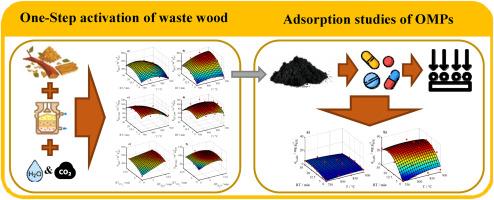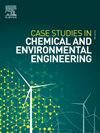废木材一步热化学活化吸附微污染物:通过实验设计进行优化
Q1 Environmental Science
Case Studies in Chemical and Environmental Engineering
Pub Date : 2025-08-09
DOI:10.1016/j.cscee.2025.101273
引用次数: 0
摘要
废木材(WW)的不断增加以及废水处理中对活性炭(AC)的需求突出了对可持续替代品的需求。WW通过在流化床反应器中使用二氧化碳、蒸汽或两者的一步热化学活化转化为AC。采用实验设计的方法来优化温度和停留时间。所得活性炭的表面积高达708 m2 g−1,对有机微污染物的吸附能力为254 mg g−1。该工艺产生了良好的孔隙度和表面化学性质。它支持循环经济原则,并提供符合当前环境法规的可扩展路线。本文章由计算机程序翻译,如有差异,请以英文原文为准。

One-step thermochemical activation of waste wood for micropollutant adsorption: Optimisation via design of experiments
The increasing generation of waste wood (WW) and the demand for activated carbon (AC) in wastewater treatment highlight the need for sustainable alternatives. WW was converted into AC via one-step thermochemical activation using carbon dioxide, steam, or both in a fluidised-bed reactor. A Design of Experiments approach was applied to optimise temperature and residence time. The resulting ACs achieved surface areas up to 708 m2 g−1 and adsorption capacities of 254 mg g−1 for organic micropollutants. The process yielded favourable porosity and surface chemistry. It supports circular economy principles and offers a scalable route aligned with current environmental regulations.
求助全文
通过发布文献求助,成功后即可免费获取论文全文。
去求助
来源期刊

Case Studies in Chemical and Environmental Engineering
Engineering-Engineering (miscellaneous)
CiteScore
9.20
自引率
0.00%
发文量
103
审稿时长
40 days
 求助内容:
求助内容: 应助结果提醒方式:
应助结果提醒方式:


